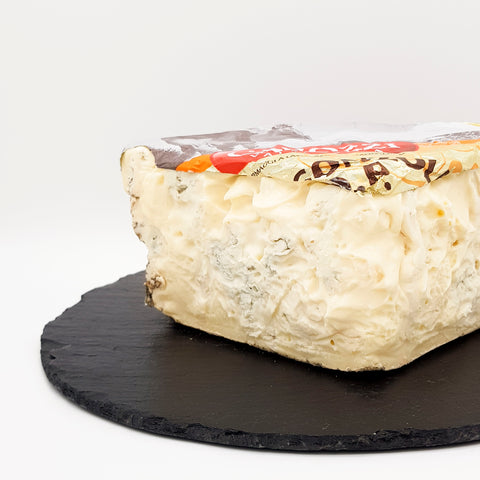Gorgonzola Dolce, Dolcelatte, and Cambozola: Exploring Differences in Production and Flavour
The world of cheese can be perplexing for enthusiasts trying to differentiate between Gorgonzola Dolce, Dolcelatte, and Cambozola. I often hear customers using these three names interchangeably, but the truth is that these cheeses have notable distinctions deserving of closer examination. In this blog post, I will explore the variations in production and flavour of these three soft cheeses, illuminating their distinct characteristics and qualities.
Gorgonzola Dolce:
Gorgonzola Dolce is an artisan cheese crafted on a small scale, resulting in a more natural texture with a complex flavour and aroma. It is the original cheese that Dolcelatte and Cambozola imitate.
Originating from the Lombardy region of Italy, Gorgonzola Dolce derives its name from the town of Gorgonzola. What sets this cheese apart from other blue cheeses is its milder strain of penicillium mould, called penicillium glaucum, and a relatively short maturation period.
The Consorzio per la Tutela del Formaggio Gorgonzola strictly regulates its production to meet high-quality standards. It holds the prestigious PDO (Protected Designation of Origin) status from the European Union, ensuring that only cheese meeting specific production criteria from a designated geographical area can bear the name "Gorgonzola." This protection instils confidence in consumers regarding the authenticity and quality of the cheese they purchase.
With its gooey and spreadable texture, Gorgonzola Dolce pairs wonderfully with crackers or salads. It also serves as an excellent addition to any cheeseboard, especially for those who prefer a milder blue cheese, complemented by moderately wines such as Moscato d’Asti.

Dolcelatte and Cambozola, in contrast, are mass-produced cheeses made on an industrial scale by large-scale dairy companies. These modern production methods allow for high-volume production and consistent flavour and texture.
Dolcelatte:
Dolcelatte, meaning "sweet milk" in Italian, is produced on a much larger scale than Gorgonzola Dolce, making it an industrially-produced cheese. While it is often compared to Gorgonzola Dolce, Dolcelatte has a firmer texture and less flavour due to its shorter aging period and less complex milk. Although it serves as a popular cooking cheese, it is less favoured for cheeseboards.
Cambozola:
Cambozola, a German creation, is another industrially-produced cheese made on a much larger scale than Gorgonzola Dolce. Combining the styles of Camembert and Gorgonzola, Cambozola features a white rind and rich creamy texture. However, compared to artisan Camembert de Normandie and Gorgonzola Dolce, it has a more artificial taste and appearance.
In summary, Gorgonzola Dolce, Dolcelatte, and Cambozola are all soft blue cheeses made from cow's milk, but their key distinction lies in their production scale and therefore flavour. Gorgonzola Dolce, crafted on a small scale by artisans, exhibits a refined natural texture with a complex flavour and aroma. While Dolcelatte and Cambozola are suitable for cooking, those seeking a cheeseboard display with a more refined and complex flavour may prefer Gorgonzola Dolce.
The Cheese Lady x
P.S. Get 10% off your cheese, when you subscribe to our newsletter HERE.



